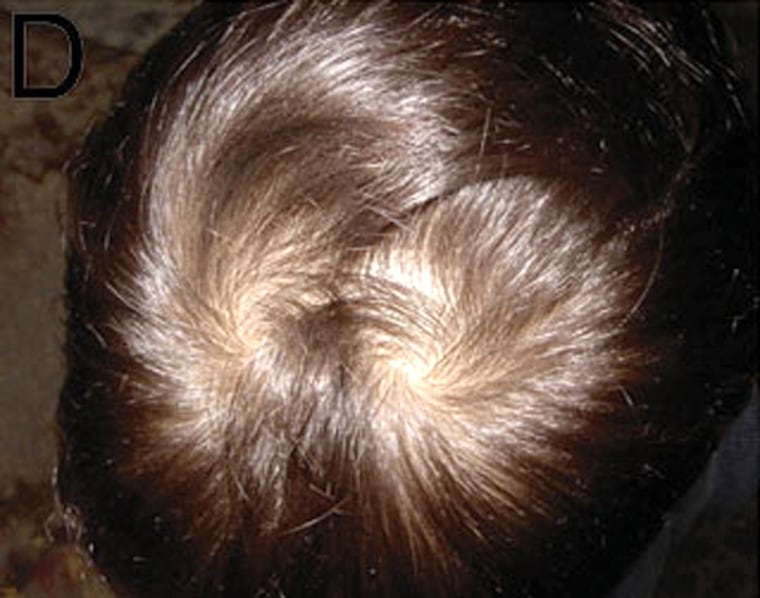Having a strange hair life? Blame your parents.
That’s right, misbehaving hair may be inherited, according to a study released Monday.
Researchers studying mice determined that the aptly named gene Frizzled 6 controls hair patterns. Subjects without the gene had strange patterns, including whorls of hair on their hind feet, back of the head and chest. Some also had tufts and ridges in the hair on their head.
Humans “have a gene that’s virtually identical, so there’s every reason to think it would be similar in effect, though that is, at this point, unknown,” said researcher Jeremy Nathans of Johns Hopkins School of Medicine and the Howard Hughes Medical Institute.
Not having the gene can’t be blamed for a simple bad hair day, however. Rather, it would result in a permanent differences in the hair, such as a cowlick or an unusual whorl.
No such thing as 'bad hair'?
Indeed, Nathans doesn’t like the phrase “bad hair.”
“These are the things that make life interesting,” he said. “We’re all different.”
The report, published in this week’s issue of Proceedings of the National Academy of Sciences, noted that Frizzled genes were first discovered in fruit flies, where they control wing hair and bristle patterns.
Most flies' bristles are all pointing in an orderly way, but without the gene they don’t know which way to point, Nathans explained. The gene was named because flies without it look like they’re having a bad bristle day, he said.
Complex hair patterns occur in many mammals, including guinea pigs, prairie dogs, horses, pigs, cattle, dogs and humans, so the researchers wondered it the same genes were at work.
Unusual patterns
That led them to study the effect of deleting the Frizzled 6 gene in mice, producing unusual hair patterns, although the hair follicles looked normal under the microscope.
The bottom line of the study, Nathans explained, “is there’s a system of patterning during development of the embryo.”
This system can be seen by looking at the pattern of hairs, but underneath are many other pattern systems which are not obvious from the surface, he explained.
For example, Nathans said, the Frizzled 3 gene is active in determining the pathways of nerves, which need to know how to connect to do their work.
He also noted that a study last year linked human hair patterns with left- or right-handedness, suggesting the same genetic factors may play a role in both.
The research was funded by the Howard Hughes Medical Institute.
